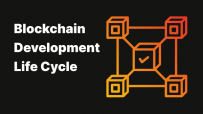
A Complete Guide To DeFi Yield Farming Development
SubscribeThe world of blockchain and cryptocurrencies is constantly evolving. Yield farming is the latest buzzword in the crypto and DeFi sphere. It has opened new ways for investors to generate revenue from cryptocurrencies other than trading. As DeFi is gaining further attention and looking primed for mainstream adaptation, the stock of DeFi yield farming is looking all ready to skyrocket. But getting into yield farming crypto without proper knowledge about it is not advisable. So here is everything you need to know about yield farming crypto in a complete guide to DeFi yield farming development.
Read more About Best DeFi Crypto Coins In 2021
What is DeFi Yield Farming?
In DeFi Yield Farming, investors put their crypto in DeFi platforms to earn interest as rewards or incentives. It is a form of passive income by making your crypto work for you. Yield farming is similar to a bank loan. You are the bank in this case and will receive interest on the crypto you have invested. It is one of the most secure ways to earn reliable income on your crypto. You can lend or borrow from a DeFi platform that supports yield farming.
Yield farming involves staking or lending crypto assets within DeFi protocols to earn increased returns as interest, incentives, or additional cryptocurrency. The word farming indicates the increased profit percentage offered through the liquidity of various DeFi protocols. The entire yield farming system is operated using smart contracts. They are used for connecting the borrowers and lenders and managing the rewards for investors.
Advantages of DeFi Farming
- Potential to gain huge profits.
- Rewards yielded can be invested in other DeFi projects to yield more rewards.
- Avoids the major liquidation risks involved in Defi Exchange platforms.
- Offers complete transparency and flexibility.
- Smart contracts and Dapps help investors in managing their DeFi farming with ease and without the need for manual verification.
- You can earn some extra tokens on DeFi crypto exchange platforms.
Terms associated with yield farming crypto
Liquidity PoolLiquidity pools are the pools of tokens or assets that provide greater returns to investors compared to money markets. These are smart contracts that secure the assets to help to trade via high liquidity provision. Liquidity pools are effective for various platforms to provide the required liquidity for different cryptocurrencies. Liquidity pools require liquidity providers to function accurately. They stake their holdings in liquidity pools to earn rewards created by the DeFi platform. These rewards are from the charges applied by the DeFi platforms. Certain liquidity pools give their incentives as multiple tokens. These tokens can be further deposited into different liquidity pools to gain further rewards. Uniswap and Balancer are the DeFi platforms considered as the most extensive liquidity pools giving rewards to liquidity providers for adding their assets to the pool.
Liquidity Pool ProvidersYield farming cannot be done without liquidity providers. The investors who stake their deposits or lend their assets in the liquidity pool are the liquidity providers. They are also called market makers as they essentially make the market providing what buyers and sellers need to trade. The assets in liquidity pools are advanced using smart contracts. The agreement between buyer and seller is stored and activated in the DeFi blockchain platform.
Total Value LockedTotal Value Locked (TVL) indicates the number of crypto assets secured in DeFi lending and the different kinds of money marketplaces. Total Value Locked is essentially the measure of liquidity in liquidity pools. It is a significant criterion to estimate the volume of the DeFi and yield farming market as a whole. Total Value Locked also acts as an efficient indicator to check the “market share” of various DeFi protocols.
Steps to start Defi Yield
Conclusion
Here we have the complete guide to DeFi yield farming development. The yield farming market is fairly fresh and there are a lot of opportunities for traders to make huge profits. The demand and popularity of DeFi yield farming development are only going to skyrocket in the near future.
- What is Cryptojacking? Detection and Preventions Techniques
- How to Give Cryptocurrency As a Gift?
- Blockchain Development Life Cycle – Step by Step Guide
- How To Hire A Blockchain Developer For Your Company
- How to Choose the Right Bitcoin Development Company – A Complete Guide
- Common Bitcoin Scams – Beware Of Fraudsters
- How can entrepreneurs leverage blockchain in 2023?
- Role of Blockchain in Cyber Security
- Document and Certificate Verification Through Blockchain Technology
- Initial Coin Offering (ICO): Everything you need to know in 2023
- Categories
- Azure Blockchain Service
- Bitcoin
- Bitcoin Development
- Blockchain Application
- Blockchain Application Development
- blockchain developer
- Blockchain Development
- common bitcoin scams
- Crypto software features
- Crypto softwares
- Cryptocurrency
- Cryptocurrency Development
- Cryptocurrency Exchange Software Development
- Cryptocurrency review
- Cryptocurrency Trading
- Cryptocurrency Wallet Development
- ERC20 Token Development
- Hashing Algorithm
- ICO Development
- ICO Development Service
- ico website development
- Proof of Stake Coins
- Smart Contract Development
- Uncategorized











Leave a Reply